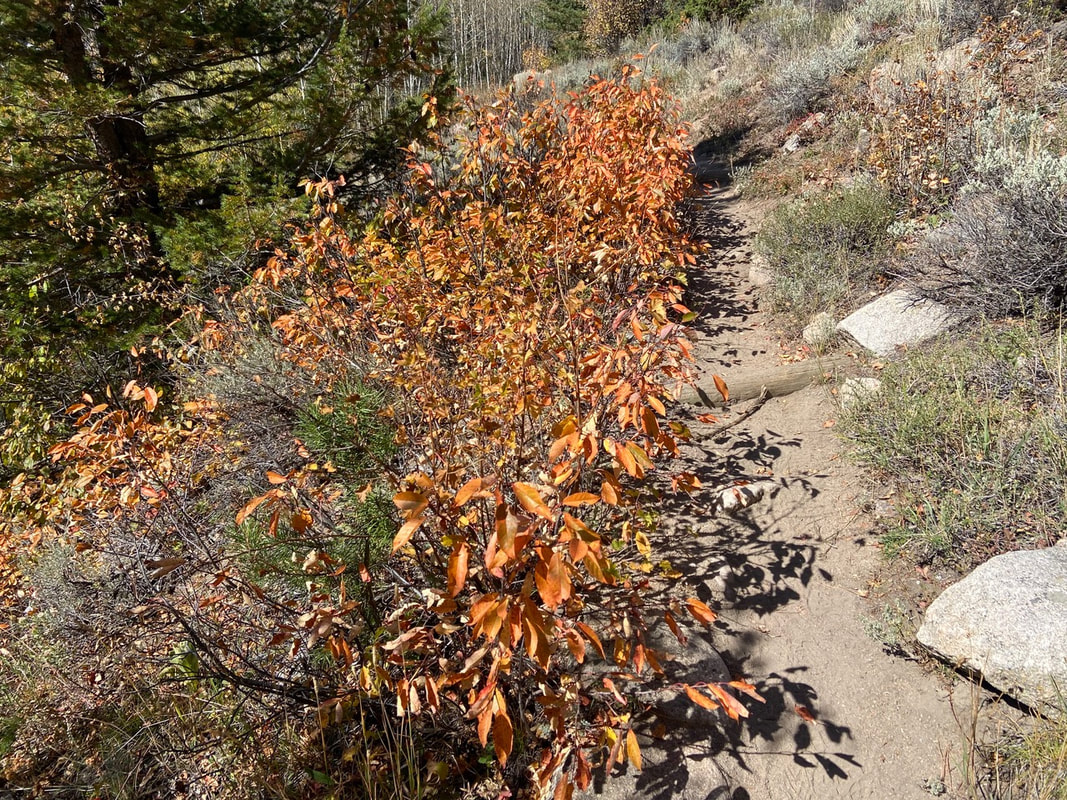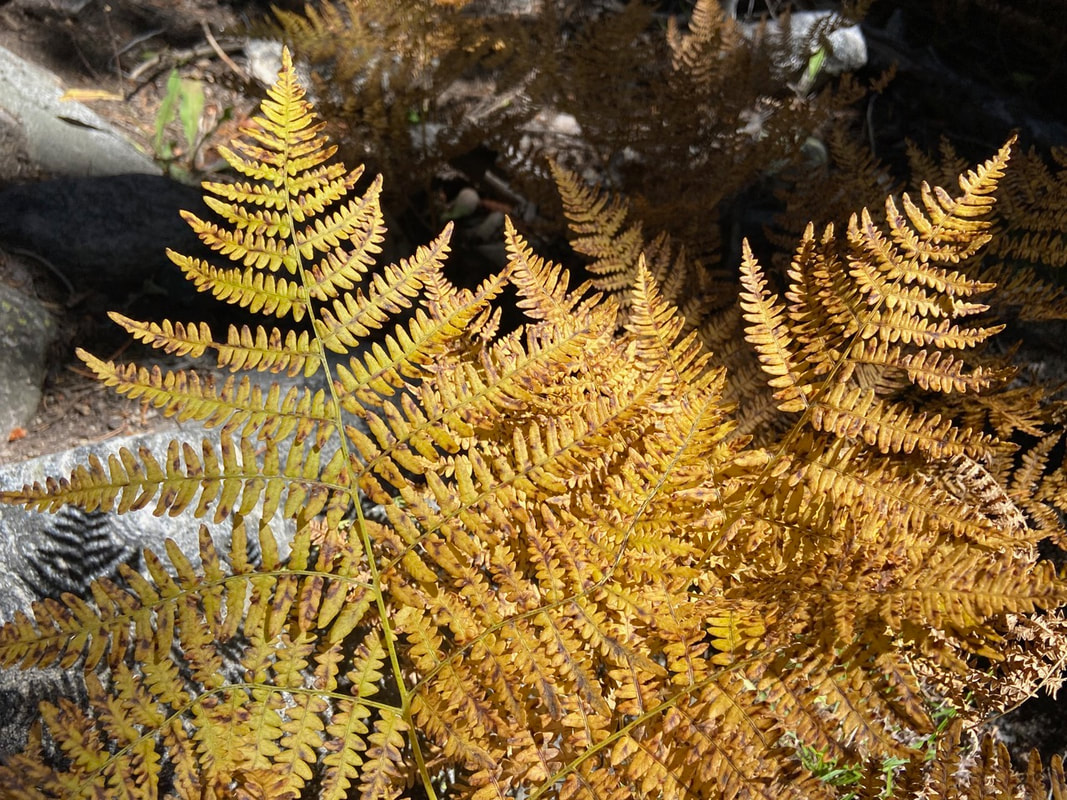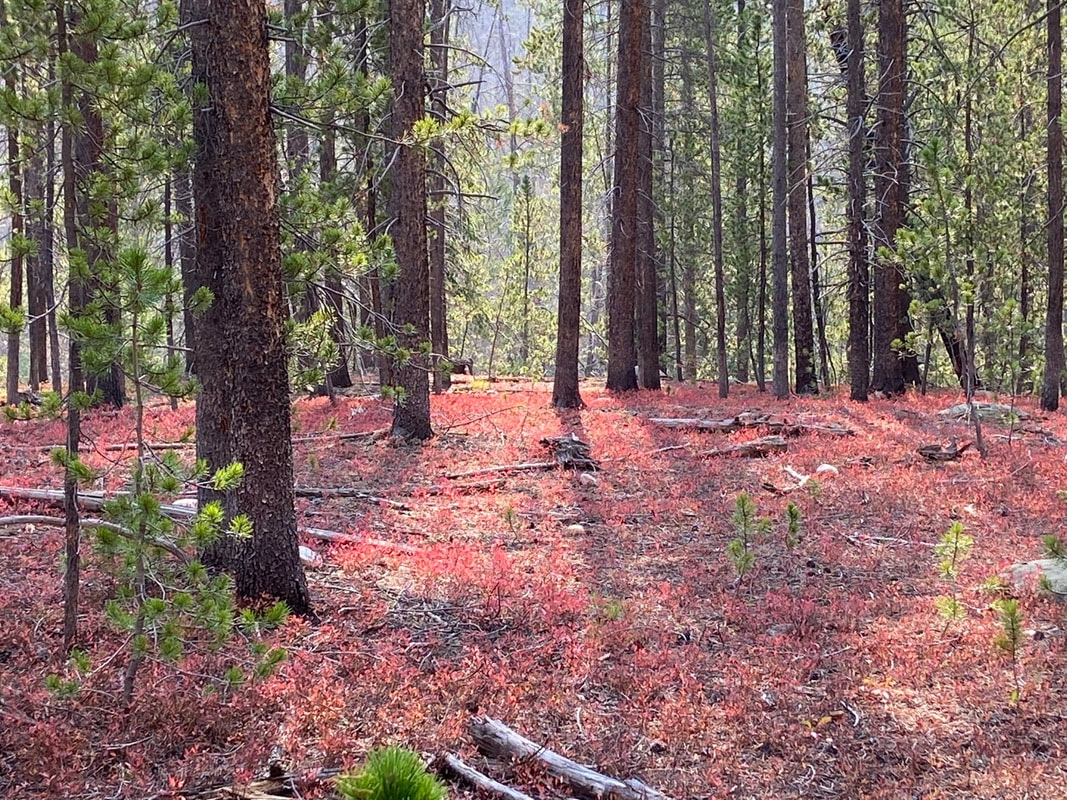|
Notes from the
Trail |
|
by Marlene Borneman In the autumn months, Colorado is known for spectacular displays of golden quaking aspens (Populus tremuloides). Mountainsides glow in deep golds, red and oranges mid-September through mid-October. No doubt an aspen grove or even one lone aspen tree in the autumn months can take your breath away. In Rocky Mountain National Park many native shrubs and flowering plants give brilliant fall colors on the forest floor, on hillsides, and along streams and creeks. Here is a tour of Rocky’s Best autumn colors beyond the aspens to take in while hiking this fall. Willows - Rocky Mountain National Park boasts many species of willows. Willows, (Salix), grow along creeks, streams, and rivers, in all elevations giving stunning deep yellows. Squashberry - Viburnum edule, also known as highbush cranberry, decorates moist areas along streams and creeks with crimson red leaves and red berries making for a very pretty fall display. The berries contain a drupe which is a stony pit. Chokecherry - Prunus virginiana, is in the Rose Family Chokecherry. It's a large shrub with white fragrant flowers flowers in the spring and dark purple berries in late summer. In autumn months chokecherry shrubs gives deep red, orange and yellow colors to the hillsides. Ferns hugging the forest floor show off hues of deep bronze, shades of brown and gold. Whortleberry - Vaccinium myrtillus, carpets the forest floor with amazing colors that hang on until late October or until the first snowfalls. Golden hues of grasses in the high meadows shimmer in the sunlight. Alpine avens give the tundra a striking scene with their fern-like leaves turning the tundra into a blaze of deep maroon. Fireweed - Chamerion angustifolium, with deep pink flowers in late summer transforms in fall with showy seed capsules wrapped in long hairy magical strands and spirals appearing magical along their large deep red foliage. The most common species of Geranium, Geranium caespitosum, adds to the understory with shades of red, yellow and orange leaves. Oregon-Grape - Berberis repens, spreads in large masses in the understory of the forest. Oregon-grape produces large, deep blue, and purple berries with royal- red thick shiny leaves adding a striking scene to a hike.
2 Comments
Marcia Tavel
10/10/2024 08:56:51 am
I also love the colors of the grasses, shrubs, and the ground cover plants in the fall. Looking down is as important as looking up, went out and about in the fall.
Reply
Rocky Mountain Day Hikes
10/10/2024 09:47:56 am
It is a beautiful time for a hike! Thanks for reading!
Reply
Leave a Reply. |
"The wild requires that we learn the terrain, nod to all the plants and animals and birds, ford the streams and cross the ridges, and tell a good story when we get back home." ~ Gary Snyder
Categories
All
“Hiking -I don’t like either the word or the thing. People ought to saunter in the mountains - not hike! Do you know the origin of the word ‘saunter?’ It’s a beautiful word. Away back in the Middle Ages people used to go on pilgrimages to the Holy Land, and when people in the villages through which they passed asked where they were going, they would reply, A la sainte terre,’ ‘To the Holy Land.’ And so they became known as sainte-terre-ers or saunterers. Now these mountains are our Holy Land, and we ought to saunter through them reverently, not ‘hike’ through them.” ~ John Muir |
© Copyright 2025 Barefoot Publications, All Rights Reserved














